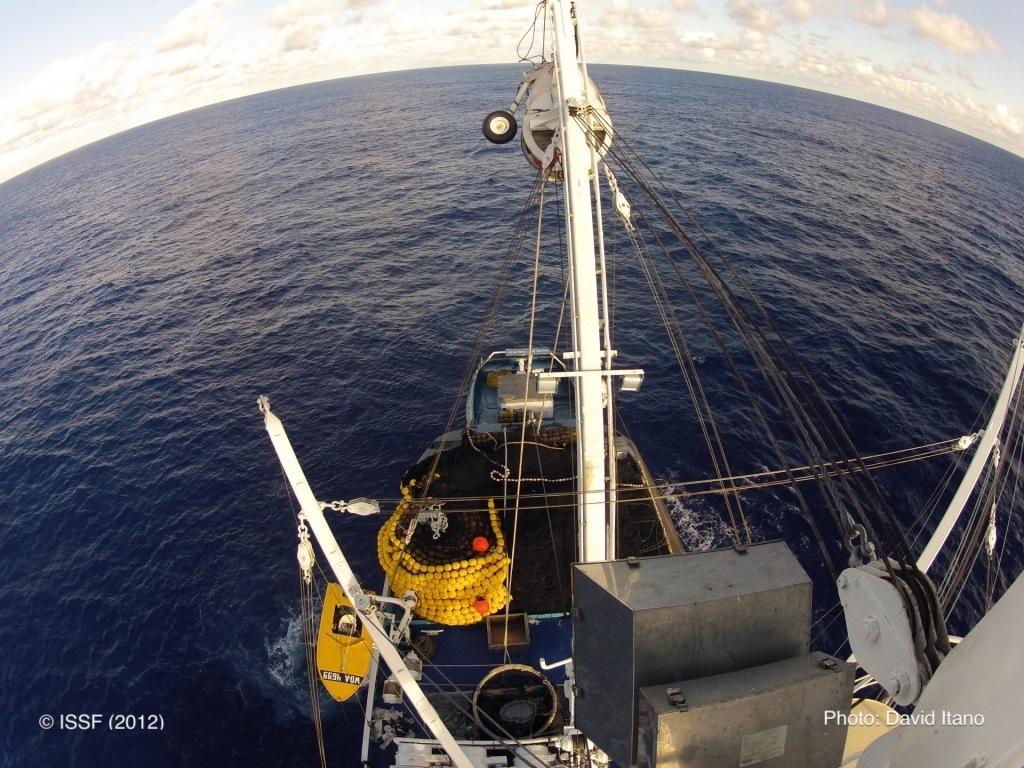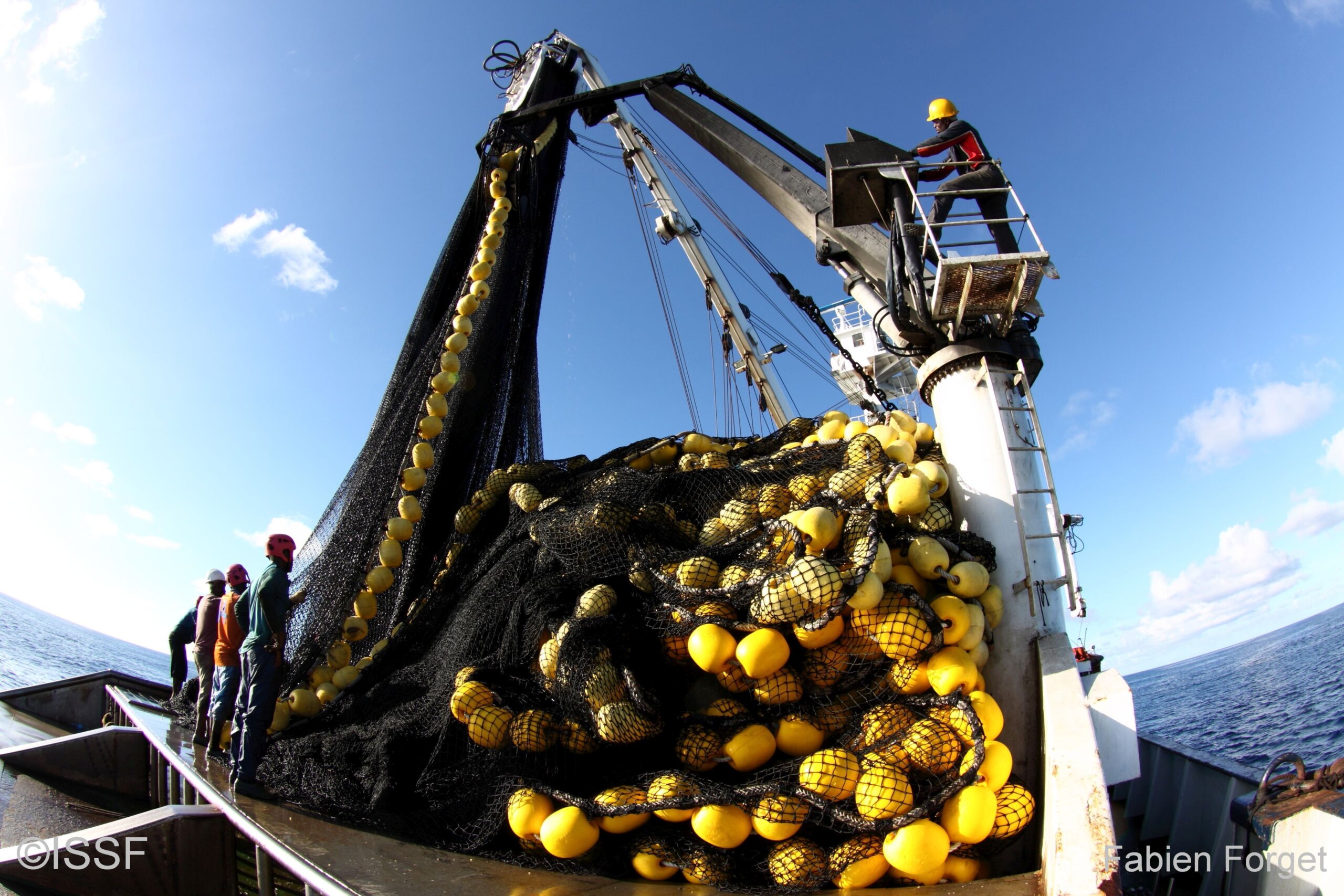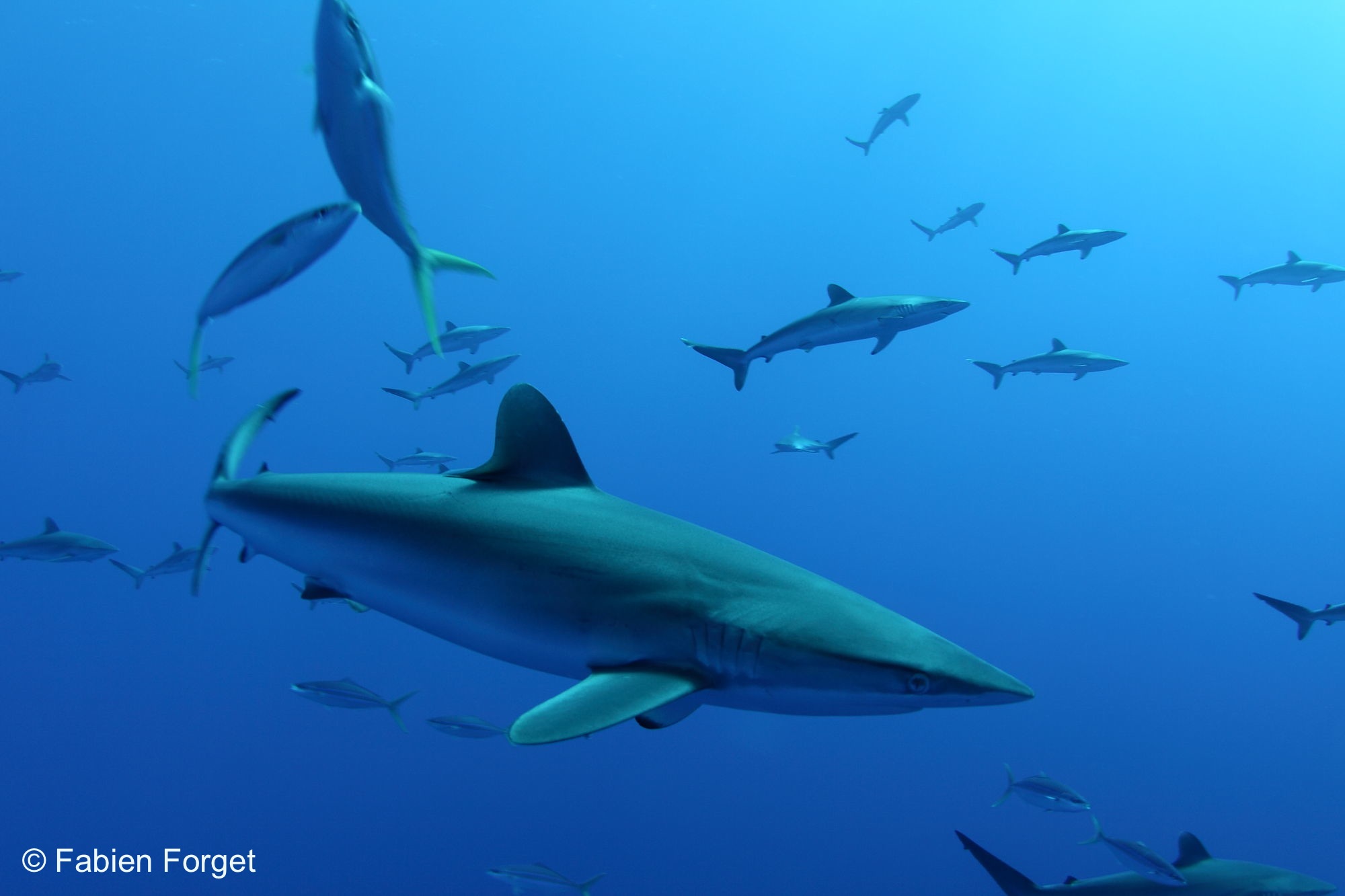State of Tuna Stocks Worldwide Assessed in Comprehensive ISSF Report
Of the total tuna catch in 2016, 78% came from stocks at “healthy” levels, unchanged since last reported, according to a February 2018 International Seafood Sustainability Foundation (ISSF) Status of the Stocks report. Skipjack tuna stocks — at healthy levels in all ocean regions — constituted more than one-half of the 2016 total catch.
One notable change in stock status in the February 2018 Status report is for Southern bluefin tuna, a stock that has moved from orange to yellow in abundance ratings. Stock abundance is low, about 13% of the unfished level. However, the stock is rebuilding continuously as a result of the implementation of a robust Management Procedure (a Harvest Strategy) by the Commission for the Conservation of Southern Bluefin Tuna, the regional organization in charge of managing the stock.
In contrast, the Pacific bluefin stock, along with the Indian Ocean yellowfin stock and the Atlantic Ocean bigeye stock, remains overfished. See Tables 1 and 2 in the report for specific rating changes.
Southern #bluefin #tuna is rebuilding as a result of #CCSBT's robust Management Procedure. Share on XThere were no dramatic changes in tuna stock status since the previous November 2017 Status report; the updated report reflects new data made available at late 2017 tuna Regional Fisheries Management Organization (RFMO) meetings.
Updated several times per year, Status of the Stocks assigns color ratings (green, yellow or orange) on stock heath, stock management, and ecosystem impact. The report ranks the 23 stocks of major commercial tunas around the world using a consistent methodology.
Key Statistics in the Report
- Total catch: In 2016, the total major commercial tuna catch was 4.9 million tonnes, a 2% increase from 2015. More than half of the total catch (57%) was skipjack tuna, followed by yellowfin (30%), bigeye (8%) and albacore (4%). Bluefin tunas (3 species) accounted for only 1% of the global catch. These percentages changed only slightly from the Nov. 2017 reporting period.
- Abundance or “spawning biomass” levels: Globally, 57% of the 23 stocks are at a healthy level of abundance, 13% are overfished, and 30% are at an intermediate level.
- Stocks receiving orange scores, indicating overfished status, include Atlantic Ocean bigeye, Pacific Ocean bluefin and Indian Ocean yellowfin.
- Fishing mortality levels: 65% of the 23 stocks are experiencing a well-managed fishing mortality rate, and 13% are experiencing overfishing (with no change from the previous report).
- Largest catches by stock: The three largest catches in tonnes are Western Pacific Ocean skipjack, Western Pacific Ocean yellowfin, and Indian Ocean skipjack.
- Tuna production by ocean region: Most (53%) of the world’s tuna is harvested from the Western and Central Pacific Ocean, followed by the Indian Ocean (20%), Eastern Pacific Ocean (13%), and Atlantic Ocean (10%).
- Tuna production by fishing gear: 65% of the catch is made by purse seining, followed by longline (12%), pole-and-line (8%), gillnets (3%) and miscellaneous gears (12%). These percentages changed only slightly from the Nov. 2017 reporting period.
About the Report
There are 23 stocks of major commercial tuna species worldwide – 6 albacore, 4 bigeye, 4 bluefin, 5 skipjack, and 4 yellowfin stocks. The Status of the Stocks summarizes the results of the most recent scientific assessments of these stocks, as well as the current management measures adopted by the RFMOs. This report ranks the status and management of the 23 stocks using a consistent methodology based on three factors: Abundance, Exploitation/Management (fishing mortality) and Environmental Impact (bycatch).
ISSF produces two reports annually that seek to provide clarity about where we stand — and how much more needs to be done — to ensure the long-term sustainability of tuna stocks: the Status of the Stocks provides a comprehensive analysis of tuna stocks by species, and the Evaluation of the Sustainability of Global Tuna Stocks Relative to Marine Stewardship Council Criteria (MSC) provides scores for the stocks and RFMOs based on MSC assessment criteria. The MSC-certified fisheries list (Appendix 2) in Status of the Stocks complements the Evaluation report.
Together, these tools help to define the continuous improvement achieved, as well as the areas and issues that require more attention. Access the newly updated ISSF stock status ratings here.


